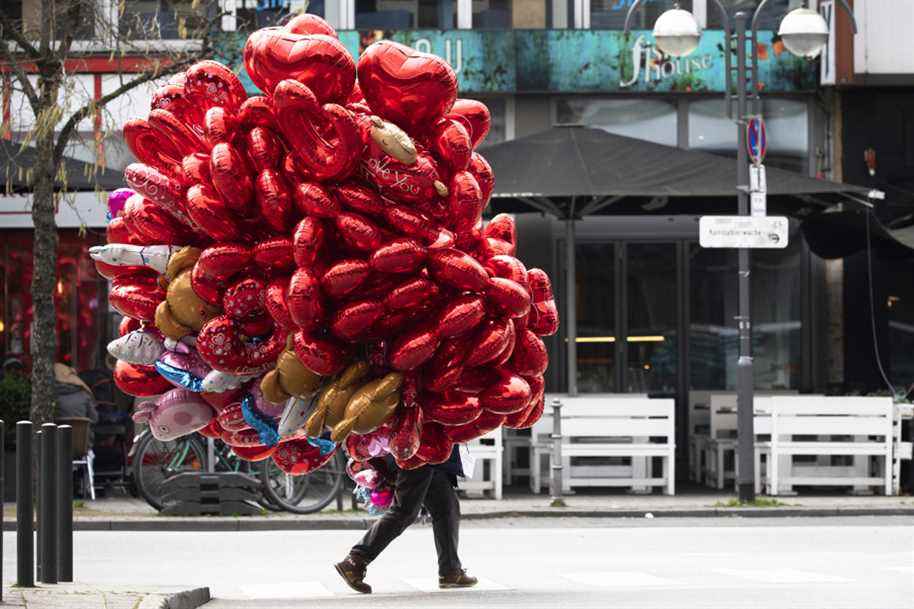(Paris) Celebration with bawdy origins, romantic tradition, recent commercial invention: the history of Valentine’s Day is all of these things at the same time.
Posted yesterday at 11:06 a.m.
The February 14 holiday, celebrated almost everywhere in the world, honors couples in Europe, celebrates friendship more widely in the United States, and is a feminine ritual in Japan.
Historical reminder and overview of Valentine’s Day celebrations across the globe.
Pagan and bawdy origins
The origin of the feast of Saint Valentine, the Lupercalia were Roman festivals of purification celebrated in mid-February. Naked young men had to whip young women to make them fertile.
These festivals are the ancestors of the medieval carnivals which, with their lotteries for lovers, gradually culminated in Valentine’s Day, explains the French sociologist Jean-Claude Kaufmann in his book Valentine’s Day, my love!
Roman martyr priest
This feast is, of course, also linked to the cult of the Roman priest Valentin, who was beheaded on February 14, in the third century, for having celebrated Christian marriages.
Legend has it that Valentin cured his jailer’s daughter of blindness and that the day before his martyrdom, he slipped her a note signed “your valentin”.
This “legend was invented a posteriori because the religious and political authorities needed this storytelling “, reports Jean-Claude Kaufmann.
Lotteries for lovers

PHOTO FAYAZ AZIZ, REUTERS
A flower seller in Peshawar, Pakistan
Practiced from the end of the Middle Ages in England and France, lotteries for lovers associated the writing of love notes with the celebrations of Valentine’s Day, reports archivist paleographer Nathalie Koble.
Under Louis XIV, the French writer Gabriel de Guilleragues described this game as follows: “You have to put the names of thirty men and thirty women in sixty pieces of paper, to copy sixty madrigals separately. After drawing separately the name of a man and that of a woman, we draw two madrigals, to see what they say to each other”.
valentines
In England, the banknotes are transformed into “valentines”, sweet words that young lovers address to each other for February 14. The development of the post in the 19and century gives a boost to these exchanges.
Over $20 billion
It’s in the middle of the 19and century and in the United States that the modern and commercial kick-off is given on Valentine’s Day, thanks to the invention of manufactured cards that it was enough to send by post to one’s lover.
The success of this celebration, new in the United States, is “dazzling”, reports Jean-Claude Kaufmann. Also the promoters quickly had the idea of extending the target audience of lovers to a larger population of parents, children, friends or neighbours.
Today, the US version of Valentine’s Day is a grand celebration of love, friendship and affection, which an estimated $23.9 billion will be spent on in 2022. of the American Trade Federation.
Chocolates for men in Japan

PHOTO UMIT BEKTAS, REUTERS
A Valentine’s Day decoration in Kyiv, Ukraine
In Japan, the emergence of Valentine’s Day dates back to the aftermath of the Second World War when confectionery manufacturers had the idea of making February 14 a day when women give chocolates.
Half a century later, the tradition is well anchored: millions of Japanese women offer pralines or ganaches for Valentine’s Day as a sign of affection, friendship or professional respect, with very specific codes.
The “giri-choko”, chocolates of obligation, are reserved for colleagues and bosses while the “honmei-choko”, chocolates of superior quality, are only the sign of “true love”, explains the teacher and Japanese translator Namiko Abe.
Western party forbidden
The celebration of Valentine’s Day is prohibited or threatened in around thirty countries, according to Jean-Claude Kaufmann. These are in particular Muslim countries.
In Pakistan, a High Court in Islamabad in 2017 banned public celebrations of Valentine’s Day and ordered the media to no longer promote Valentine’s Day, in this country where the vast majority of marriages are arranged.
